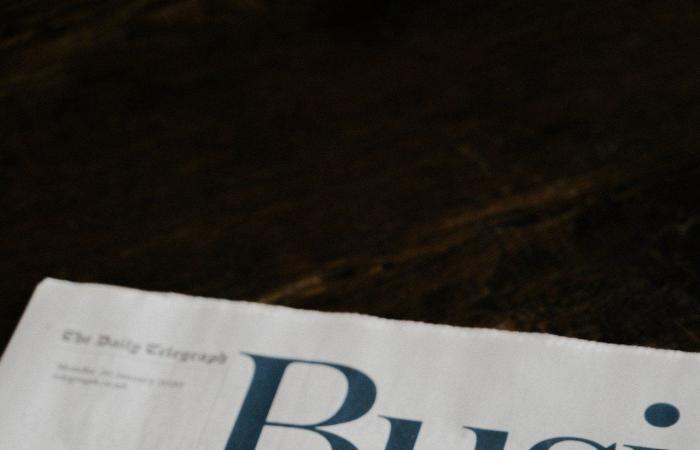Buying works of art for pure pleasure is increasingly rare. The supply and demand for products and agreements that also have a economic return are now the order of the day. As long as it involves buying and selling young names with high speculative potential – and proportional risk – there are no big problems. It’s now in the normality of the art market, and remains within its boundaries. When, however, the discussion focuses on other terms and the promises are of sales with repurchases at fixed and safe rates of return, the situation becomes more complicated. If, in fact, art market operators begin to sell financial products disguised as paintingsenter the regulated sphere of financial markets. And, as far as the EU, and therefore Italy, is concerned, selling products and services to the public requires complying with certain rules and acquiring the necessary authorizations. A whole different world, in short, compared to the art market. A new world, but with which – if of artistic financial products And art advisory we want to talk more and more – it’s time to learn how to deal. This applies to bidders, but also to collectors who intend to buy. A very useful starting point for reflection is what happened last May, when the Consob, the National Commission for Companies and the Stock Exchange, the national authority that supervises the financial markets, has barred the door to society Art Invest Srl, preventing it from selling its artistic financial products to the Italian public. It is a case that deserves to be analyzed, because it raises precisely that cascade of consequences and questions that the breaking of the boundary between the art market and finance brings with it.
Art Invest’s offer of investments in art
What we are talking about – as mentioned in an article by The Art Newspaper – is a new variant of investment in works of art. One of the many that are increasingly seen appearing on today’s market, oriented more towards economic gain than pure pleasure purchasing. Art Invest Srl is in fact an Italian company that sells paintings to interested private individuals (from the expert collector-trader, up to the enthusiastic neophyte making their first purchase), with the double promise of buy them back after 18 monthsand to buy them back at a minimum incremental value of 6.8%. Furthermore, if in the meantime you had become fond of the works (the place where they would be kept for the period is not specified) you could also keep them without returning them. An attractive deal, in short. And what’s even more attractive (and seemingly reassuring) is seeing these ads posted on Facebook. How many artists offer their creations via social media? Coming across a slightly more speculative and complex offer – especially for a young risk-loving millionaire – would seem normal these days. But Consob said no. How come?
The article continues below
Because the Art Invest Srl case talks about financial products
As much as it can be sold on Facebook, the product offered by Art Invest Srl is in all respects a financial product. And only secondarily an artistic affair. If you read the definition of financial products reported by Consob itself, you immediately understand the analogy. These are all those forms of investment that include “(a) an investment of capital, (b) an expectation of return of a financial nature, and (c) the assumption of a risk directly connected and correlated to the investment of said capital”. Art Invest’s proposal – from what is understood and from what Consob has also understood – meets all the requirements.
How art investments would work in the financial market in Italy
By interpreting the definition just said, we confirm that we are dealing with an offer of a financial product similar to the canonical ones, which promise the investor a return of at least 6.8% compared to the starting price, over a period of one and a half years (i.e. 18 months). There is also an additional option, particularly attractive for an individual who is passionate about art. That is, to be able to acquire (and it is concretely assumed) the work in question at the end of the period. And this proposal, although rather unusual, could still be acceptable for the market, considering the ever-increasing cases of special financial instruments. What’s really important is that the bidder has the credentials to operate. In the name of transparencyfrom the fair competition, and above all of protection of end investors, those who sell financial products and services must comply with a series of minimum rules defined at European level, of which Consob promptly checks the application. The fate of those who – as in this case for Art Invest Srl – do not respect them, is not to be able to continue selling their services. In fact, if you go to the Consob website – in the area Warnings (where the case in question also appeared) – you will often see a message in the adverts inviting you to be careful, underlining how since 2019 (when it was given the power to act in these terms) the sites closed because they offered illicit and unauthorized investments today they amount to more than 1000. It is a continuously growing figure, which currently also includes the Art Invest website, considered outside the rules by Consob.

Buyers and the market for artistic financial products
To continue to expose the crux of the issue, let’s assume that the artistic financial product in question comes from a company that has obtained the authorization to operate, demonstrating that you meet the requirements. Art Invest Srl would stop here (and so it happened), being called upon to provide the documentation requested by Consob. At this point, European legislation (the MIFID II and subsequent updates) would require the intermediary in charge of placing the product and identify the market to which it is aimed. In the name of protecting the investor (even the completely inexperienced one), not all financial securities are suitable for all portfolios. Those above a certain level of risk are usually closed to non-experts. Where, to be labeled as experts a degree in economics and finance is not enough: you need full awareness, a profession close to the markets, and familiarity with instruments other than government bonds. For those who turn to a bank for these services, for example, there is a special one survey preliminary form to be filled in, which – testing the customer’s knowledge – places him in the appropriate category. Another fundamental point: the document that illustrates all the characteristics of the product, risks and performance expectations, with (relatively) simple language. So called KID (Key Information Document). For both points raised, it goes without saying that Art Invest is currently unable to satisfy them. The Facebook ad most likely does not match the information requirements of a KID. And, above all, publishing a financial investment proposal on social media does not allow the target to be adequately segmented, targeting it only to those who are aware of the risk very high.

How to make artistic financial products in order
Having analyzed all aspects of the case, it is clear that it is a financial matter, albeit with a formal artistic component. Matter that must respect the rules of its respective market. However, it is natural to ask why the problem has never arisen before. Is this perhaps the first case of artistic investments that have little to do with art? As noted The Art Newspaper, the English market has probably been full of them for some time. Why, then, has nothing been done yet? Why has the FCA – equivalent of the British Consob – not yet blocked any site offering similar products? It could be explained by considering that many of these proposals are not public: they remain private negotiations, aimed at the wealthiest collectors. The same thing about being offered attractive only to a select few multi-billionaires has so far reduced the priority of action, considering the risks to the public secondary. If, however, these artistic financial products begin to circulate also among more vulnerable individuals with less capacity to absorb losses – Art Invest Srl’s offers in fact started from 3,000 euros – the problem becomes more serious. And it’s a problem that could touch on a wider circle of actors that operate on the border between art and finance. Companies that offer similar opportunities to the one discussed are certainly involved; but the list continues, calling into question a category not mentioned so far: the art advisor. In fact, assimilating the two markets, it would be necessary to also look at those who offer consultancy aimed at encouraging the purchase of the aforementioned artistic-financial products. In fact, EU legislation imposes rules and requirements on them too, to protect the investor and market transparency. Here is another critical, new topic that could soon be raised.
Emma Sedini
Artribune is also on Whatsapp. Simply click here to subscribe to the channel and always be updated








